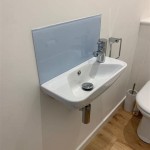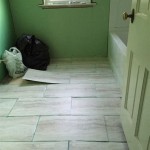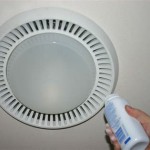Do Bathrooms Need To Have Windows?
The question of whether bathrooms need to have windows is a multifaceted issue influenced by building codes, ventilation requirements, natural light preferences, and overall design considerations. While natural light and ventilation are often desirable, modern building practices and technology offer alternatives that can meet code requirements and provide functional and aesthetically pleasing bathroom spaces even without windows. Analyzing the specific regulations, advantages and disadvantages of both windowed and windowless bathrooms is essential to understanding the considerations involved in this decision.
Building codes, primarily focusing on health and safety, commonly dictate minimum ventilation standards for bathrooms. The International Residential Code (IRC), widely adopted in the United States, mandates that bathrooms have an operable window of a certain size or a mechanical ventilation system. The purpose of these regulations is to effectively remove moisture and odors, preventing mold growth and maintaining air quality. These stipulations serve to protect the health and well-being of the building occupants.
The presence of a window offers natural ventilation, reducing the reliance on mechanical systems. However, the required size and operation of the window are subject to local building codes and may vary depending on the geographical location. In situations where a window is present, it must be operable, meaning it can be opened to allow for air circulation. This requirement ensures that the occupants can manually adjust the ventilation as needed.
Ventilation Requirements and Alternatives
When a window is not feasible or desired, mechanical ventilation, typically an exhaust fan, fulfills the code requirements. Exhaust fans are designed to remove moisture and odors from the bathroom and vent them to the exterior of the building. The IRC specifies minimum airflow rates for bathroom exhaust fans, typically measured in cubic feet per minute (CFM). The required CFM is often determined by the size of the bathroom. The exhaust fan ducting must be designed to effectively carry the exhaust air to the outside, preventing condensation and back-flow of air.
Properly installed and maintained exhaust fans can provide adequate ventilation, even surpassing the performance of a small window. Moreover, exhaust fans can be equipped with features such as humidity sensors or timers, automatically activating when moisture levels rise or running for a specified duration after use. This automation enhances efficiency and ensures consistent ventilation. The selection and installation of the exhaust fan are crucial to meeting code requirements and achieving optimal performance.
In the absence of both a window and a mechanical ventilation system that meets code, the bathroom does not adhere to the minimum standards outlined by the IRC. This non-compliance can lead to various issues, including mold growth, poor air quality, and potential health problems for the occupants. Building inspectors will typically flag such violations, requiring remediation before occupancy is permitted.
Advantages and Disadvantages of Windowed Bathrooms
The inclusion of a window in a bathroom offers several advantages. Natural light is a primary benefit, creating a brighter and more inviting space. Sunlight can reduce the need for artificial lighting during the day, saving energy and enhancing the overall ambiance of the bathroom. Natural light also contributes to a sense of well-being and can improve mood.
Natural ventilation is another significant advantage of windows. Opening a window allows for the free flow of fresh air, effectively removing moisture and odors. Natural ventilation can be particularly beneficial in preventing mold growth, as it helps to reduce humidity levels in the bathroom. The ability to naturally ventilate eliminates the need for relying solely on mechanical ventilation systems, which may require maintenance and consume energy.
Despite the advantages, windowed bathrooms also have potential drawbacks. Privacy can be a concern, particularly if the window faces a neighboring property or a public area. Window treatments, such as blinds or curtains, can address privacy concerns, but they may also block some of the natural light. The location and design of the window are therefore crucial in ensuring adequate privacy without compromising the benefits of natural light and ventilation.
Heat loss can also be a concern with windows, especially during colder months. Single-pane windows are particularly prone to heat loss, leading to increased energy consumption for heating the bathroom. Energy-efficient windows, such as double-pane or triple-pane windows, can mitigate heat loss and improve the overall energy efficiency of the bathroom. The investment in energy-efficient windows can often pay for itself over time through reduced energy bills.
Maintenance is another consideration for windowed bathrooms. Windows require regular cleaning to maintain their appearance and functionality. Window frames and seals may also require maintenance or repair over time to prevent leaks and drafts. The type of window material can influence the level of maintenance required, with some materials being more durable and resistant to weather damage than others.
Design Considerations for Windowless Bathrooms
When designing a bathroom without windows, careful consideration must be given to lighting and ventilation to compensate for the lack of natural light and fresh air. Artificial lighting becomes even more critical in windowless bathrooms, requiring a well-planned lighting scheme to create a bright and inviting space. The use of multiple light sources, such as overhead lights, vanity lights, and accent lights, can help to achieve a balanced and well-lit environment.
Color temperature is another important consideration for artificial lighting in windowless bathrooms. Warm white light (around 2700-3000K) can create a cozy and relaxing atmosphere, while cool white light (around 4000-5000K) can provide a brighter and more energizing environment. The selection of color temperature should be based on the desired ambiance and the overall design of the bathroom.
The strategic placement of mirrors can also enhance the sense of light and space in a windowless bathroom. Mirrors reflect light, making the space appear brighter and larger. Large mirrors placed on walls or above vanities can create a dramatic effect and significantly improve the overall illumination of the bathroom. The positioning of mirrors should be carefully considered to maximize their reflective properties.
Mechanical ventilation is essential in windowless bathrooms to remove moisture and odors. A high-quality exhaust fan with adequate CFM is crucial for maintaining air quality and preventing mold growth. The exhaust fan should be ducted to the exterior of the building and properly sealed to prevent leaks and back-flow of air. Regular maintenance of the exhaust fan, including cleaning the fan blades and motor, is necessary to ensure optimal performance.
The use of light colors and reflective surfaces can also help to brighten up a windowless bathroom. Light-colored walls, floors, and fixtures reflect light, making the space appear larger and more open. Glossy or semi-gloss finishes can further enhance the reflective properties of surfaces. The selection of materials and finishes should be carefully considered to maximize the amount of light reflected in the bathroom.
While natural light is often considered desirable, advancements in lighting technology and ventilation systems have made it possible to create functional and aesthetically pleasing bathrooms even without windows. The choice between a windowed and windowless bathroom ultimately depends on various factors, including building codes, site constraints, design preferences, and budget considerations. Understanding the advantages and disadvantages of each option is essential for making informed decisions and creating a bathroom that meets the needs and preferences of the occupants. Regular maintenance, ventilation, humidity control, and strategic use of lighting can all assist in this process.

Does Your Bathroom Need A Window City Codes And Laws In 2024

Does Your Bathroom Need A Window City Codes And Laws In 2024

Do Bathrooms Need Windows

Are Windows Necessary In A Bathroom Victoriaplum Com

What Kind Of Windows Do Bathrooms Need Stop Phubbing

Choosing A Bathroom Window Thompson Creek

Are Windows Necessary In A Bathroom Victoriaplum Com

Do Bathrooms Need Windows

How To Find The Right Bathroom Window For Your Style

Choosing The Right Bathroom Window Option By Ecoline Windows
Related Posts







